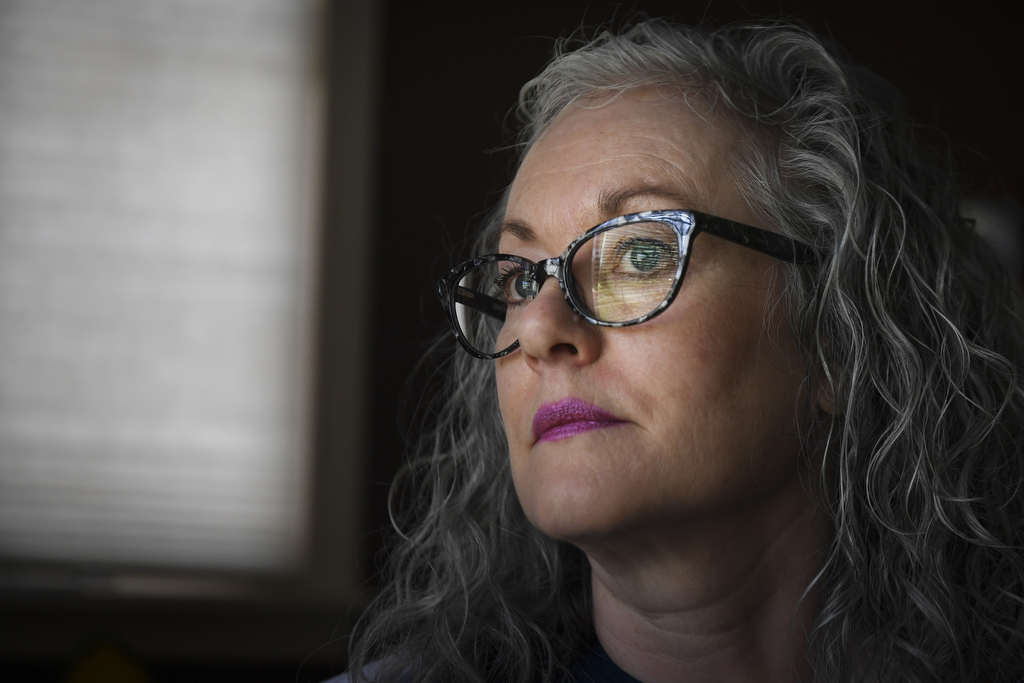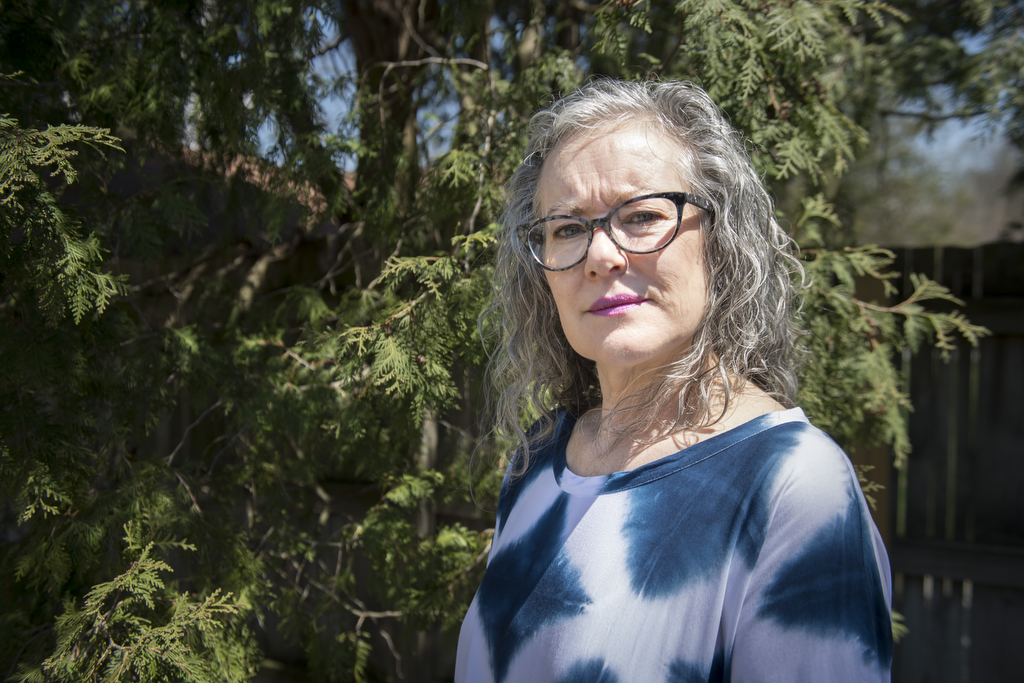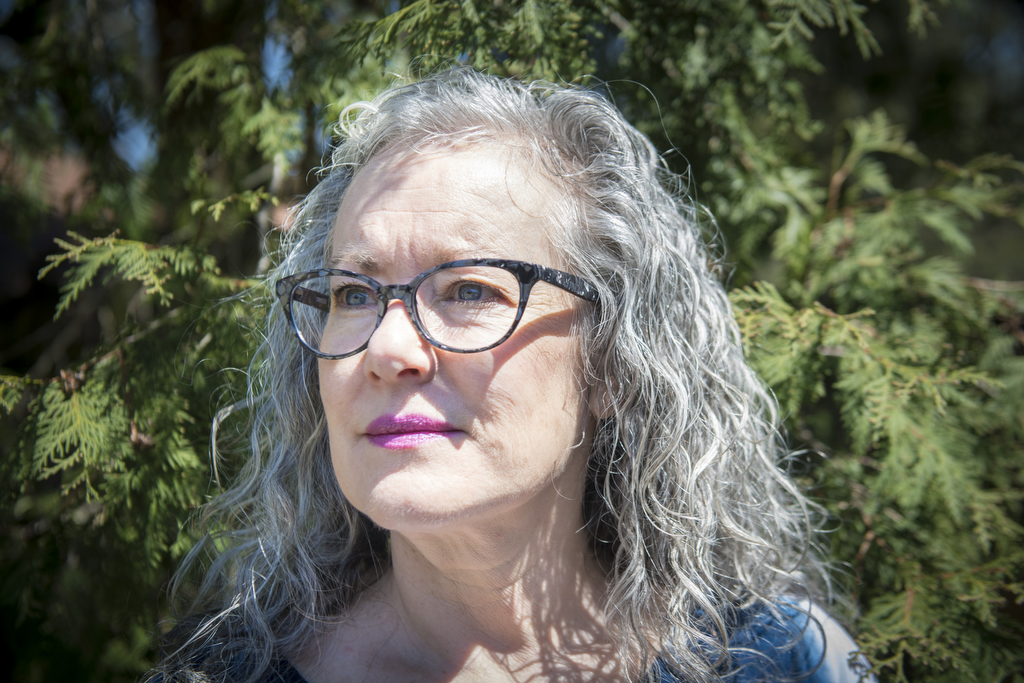Certain health topics can be awkward to talk about, but for Molly Davidson, telling her story gets easier with age.
The 58-year-old wants women to know they’re not alone.
It’s been 13 years since Davidson first experienced searing pain in her vulva and pelvic area, the effects of a somewhat mysterious disorder called vulvodynia that emerged during perimenopause.
She’s been on a quest to resolve this and related health issues ever since.
“When the vulvar pain came, it was—it was a 10 (on the pain scale) every day,” Davidson said. “I would wake up in the morning pain free, and then by 6 o’clock I was literally in the fetal position.”
A native of metro Detroit, Davidson saw pain specialists and women’s health experts as close to home as Ann Arbor and Troy, Michigan, and as far away as San Francisco. Her symptoms proved complex and the results of treatment, mixed.
She adjusted to the pain, wearing only loose-fitting clothing and avoiding long periods of sitting. In 2009 she left her mortgage banking job and went on disability for vulvar pain and other chronic conditions, including Lyme disease.
Better answers
When her San Francisco physician retired, Davidson assembled a new medical team, hoping for new and better answers.
Her search took a big leap forward in late 2017, thanks to an international Facebook forum for women with an autoimmune skin disorder called lichen sclerosus, which she knew was one cause of her vulvar pain.
This online group of more than 5,500 women keeps a list of recommended women’s health specialists worldwide. On this list was Diana Bitner, MD, an obstetrician gynecologist with the Spectrum Health Midlife, Menopause & Sexual Health team who practices just 3 miles from Davidson’s new home in Grand Rapids, Michigan.
“The fact that I found her here completely blew me away,” she said. “It’s a wonderful thing.”
She set up an appointment and met Dr. Bitner for the first time in November.
After reviewing Davidson’s medical history, Dr. Bitner performed a physical exam. She confirmed the diagnosis of lichen sclerosus, noting that while the ailment is common, it’s seldom diagnosed except in the late stages.
“Most doctors have never heard of it, or they think it’s extremely rare,” Davidson said. To have Dr. Bitner recognize it immediately “was really refreshing.”
Dr. Bitner said lichen sclerosus can be associated with a cluster syndrome called Genitourinary Syndrome of Menopause, which involves the genitals and the bladder system. Many of the syndrome’s symptoms are caused by low estrogen, though the triggers for lichen sclerosus are unknown.
But this wasn’t the only issue Davidson’s examination revealed. Dr. Bitner also diagnosed something no physician had detected before: high-tone pelvic floor dysfunction—like a charley horse in the muscles of the pelvis.
Davidson’s translation: “My pelvic muscles were in total spasm.”
That was new information for her.
“Of all the pain specialists that I’ve seen, she caught that on my first visit,” Davidson said. “And I can tell now that that was a problem even back in 2005, when it all started.”
The main fix for these muscle spasms—and the pain and complications they cause—is pelvic floor physical therapy, Dr. Bitner said.
Steady improvement
Davidson now sees Amy Bourne, PT, a physical therapist with the Spectrum Health pelvic floor rehabilitation team. Therapy involves internal and external work with the pelvic floor muscles, as well as exercises Davidson can do at home.
“Pelvic floor physical therapists are so incredible because they watch people walk, they look at hip balance, tone of the hamstrings and abdominal muscles, and they teach the patient to be aware of all of that as they learn to … let those muscles release,” Dr. Bitner said.
It’s about retraining the pelvic muscles to behave in a healthy way after they’ve become too tight. This tightness is often linked to painful intercourse and difficulties with bladder and bowel functions.
For some patients, using a vaginal dilator can teach those muscles to release. In addition, some patients benefit from vaginal valium, Dr. Bitner said.
“It will relax those pelvic floor muscles so they can have sex without pain a couple times, and then the muscles will forget that they have to protect,” she said.
Typically it’s a combination of solutions—estrogen, physical therapy, gentle yoga, vaginal valium, diet and lifestyle changes—that work together to bring resolution for women with vaginal and pelvic disorders related to midlife and menopause.
Many factors are at play, Dr. Bitner said, and she and her team put patients at ease by addressing issues openly.
“You see how we talk about this in such a matter-of-fact, objective way,” she said. “Patients become so comfortable with it. It’s really cool.”
Her goal, she says, is that patients won’t have to think about that part of their body anymore—“that it just does what it’s supposed to do.”
As for Davidson, her symptoms are easing up. The future looks hopeful.
“I’m very encouraged,” she said. “Right now I’d say things are good, but they could get better, and I think they will. I see a light at the end of that tunnel.”












 /a>
/a>
 /a>
/a>
 /a>
/a>
Would love to attend but I have grandchildren until that time. Will there be other day/time options? Thank you, Susie Barnes
Susie, you can see a video of the seminar at this link: https://www.facebook.com/spectrumhealth/videos/10155903857639232/